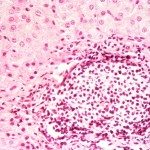Link to Pubmed [PMID] – 10831974
Obstet Gynecol 2000 Jun;95(6 Pt 1):821-7
OBJECTIVE: To evaluate the efficiency of human papillomavirus (HPV) testing by Hybrid Capture II (Digene Diagnostics Inc., Silver Spring, MD) with regard to detecting biopsy-confirmed cervical intraepithelial neoplasia (CIN) or high-grade CIN in women with mild atypia, compared with the efficiencies of polymerase chain reaction (PCR), Southern blot hybridization, and cytology.
METHODS: We prospectively studied 378 women with atypical squamous cells of undetermined significance (ASCUS) (n = 111) or low-grade squamous intraepithelial lesions (SILs) (n = 267) demonstrated by referral cytology. We did repeat cytology, sampling for detection of HPV DNA by Hybrid Capture II, PCR, and Southern blot hybridization, and colposcopic evaluation with cervical biopsies.
RESULTS: All participants underwent the Hybrid Capture II test and 320 underwent the three HPV tests. Sensitivities of Hybrid Capture II for detecting CIN and high-grade CIN (0.81 and 0.86, respectively) were similar to those of cytology (0.83 and 0.82, respectively) and PCR (0.77 and 0.95, respectively), and higher than those of Southern blot hybridization (0.48 and 0.45, respectively). Compared with cytology, combined triage with Hybrid Capture II improved sensitivities for detecting CIN (0.94 versus 0.83, P <.001) and high-grade CIN (0.96 versus 0.85), though the latter difference was not significant (P =.17). In women with ASCUS, sensitivities of combined triage and cytology for detecting CIN were 0.94 and 0.71, respectively (P =.01), and sensitivities of the two methods for detecting high-grade CIN were 0.92 and 0.66, respectively (P =.13). The increase in sensitivity was lower among women with low-grade SILs; for these women, cytology had high sensitivity (0.86 for CIN and 1.00 for high-grade CIN). The specificity of combined triage was significantly lower than that of cytology in both groups.
CONCLUSION: Compared with repeat cytology, combined triage with HPV testing markedly improves sensitivity for detecting CIN in women with ASCUS, but at the expense of specificity.

